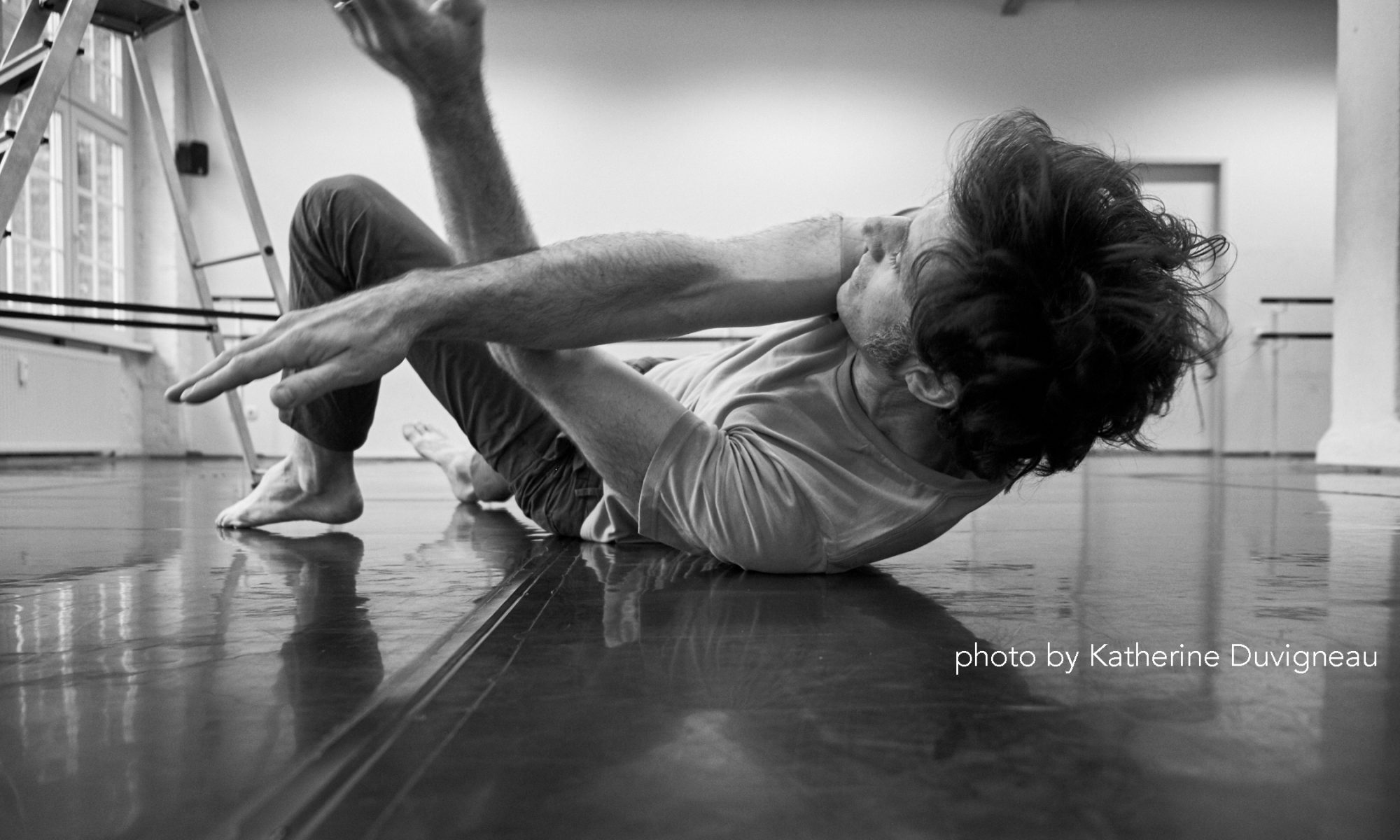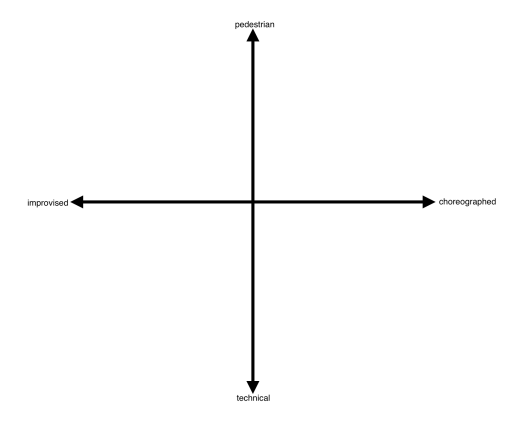‘The dancers are called on not to express a particular emotion, or set of emotions, but instead to develop refined coping mechanisms for creating continuity between disarticulated movements while remaining sensitive to their location in space. They must keep time without musical cues; sense the presence of the other dancers on stage; know blindly proprioceptively, what these other dancers are doing; and adjust the the timing and scope of their movements accordingly, thereby expressing the “human condition” at hand. All this work is “expressive”-it belongs to the “category of expression”-insofar as it is demanded by a human situation on a stage and insofar as human situations on stages (or otherwise) constitute an embodied response to the present moment, an embodied response to the utterly unique conditions of existence at one given point in time.’ – Noland, C 2010, ‘The Human Situation on Stage: Merce Cunningham, Theodor Adorno, and the Category of Expression’, Dance Research Journal, 1, p. 55
In this quote, Noland is referring to Cunningham dancers dealing with the re-ordering of set phrase material. When she writes (or otherwise), she could be referring to a contact improvisation jam. I think it is a very apt description of an silent CI jam. In CI jams, dancers are constantly “using refined coping mechanisms for creating continuity between disarticulated movements while remaining sensitive to their location in space.” [Though, how much contacters are actually aware of the whole space is open for debate! IMHO]
What people do at CI jams is, I would say, “an embodied response to the present moment, an embodied response to the utterly unique conditions of existence at one given point in time.” [Though, how much is actually an embodied response and not actually another iteration of habit is also open for debate. IMHO]
Are Cunningham choreographies that are governed by chance operations a contact improvisation jam?
Are contact improvisation jams a piece of choreography by Cunningham?
Paxton danced for Cunningham, after all.



